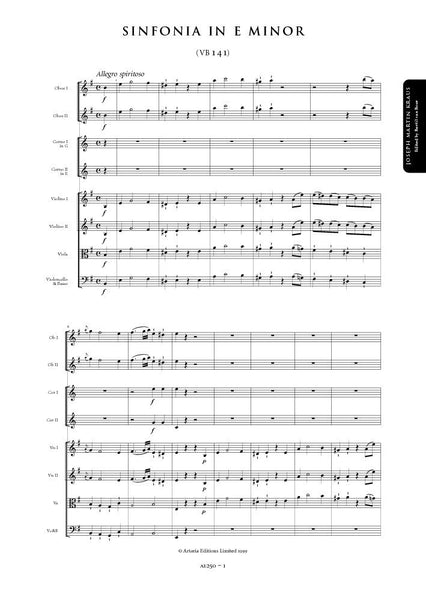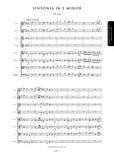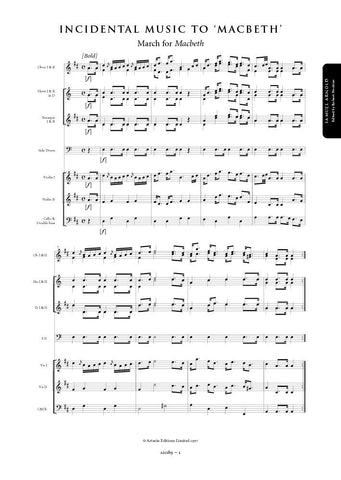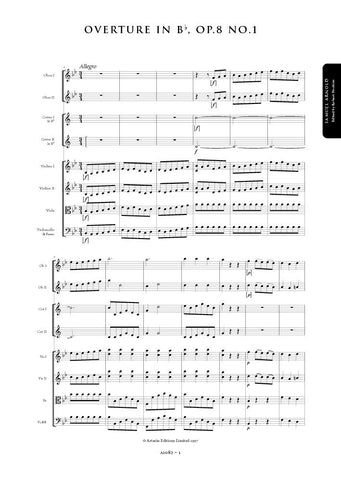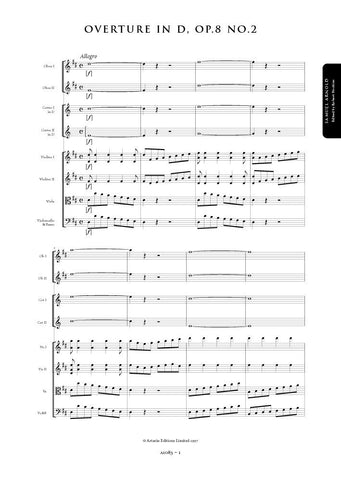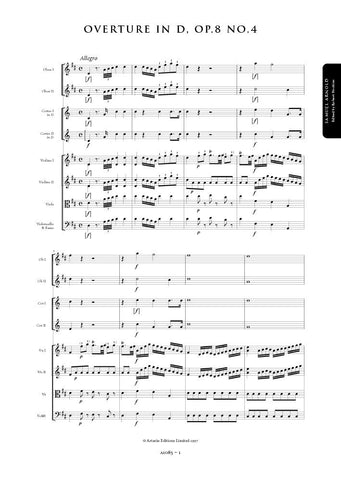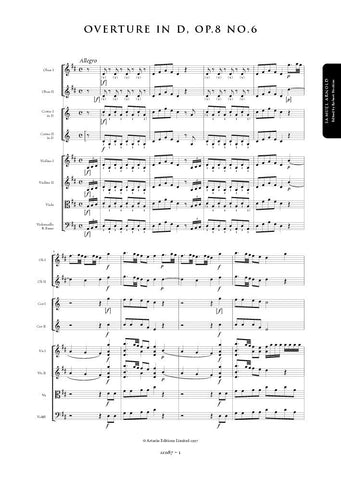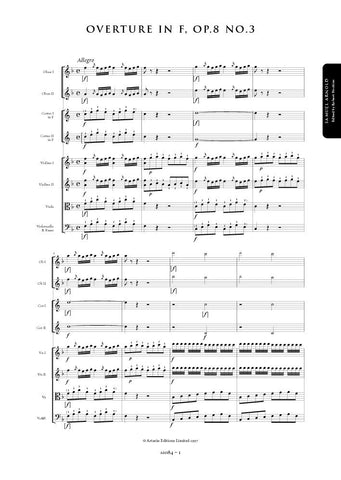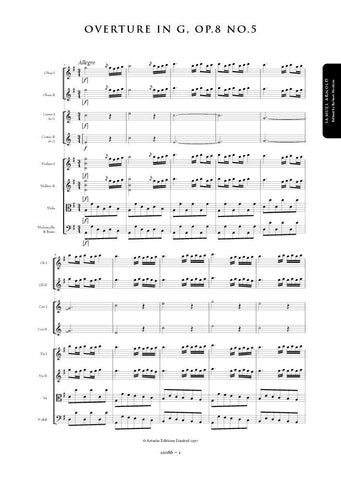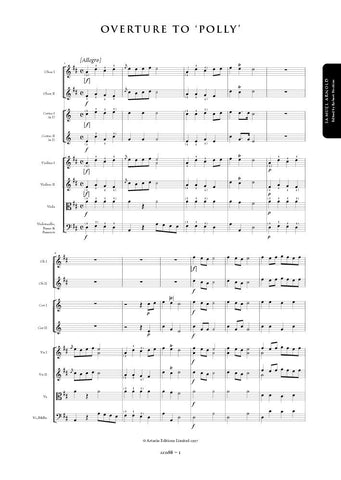Kraus, Joseph Martin: Sinfonia in E minor (VB 141) (AE250) – sheet music
Previous Product Next Product
Description |
Kraus, Joseph Martin (1756-1792)
|
||||||||||||||||||
Audio sample |
|||||||||||||||||||
Details |
The Symphony in E minor (VB 141) is one of three works in this genre where the question of authorship has, until recently, been somewhat ambiguous. Two sources exist for the work, one of which, a set of manuscript parts in the Thurn und Taxis library in Regensburg, is attributed to Kraus, and the other, the second of a set of three symphonies published in parts by the Parisian publisher Boyer, names Giuseppe Cambini as its author. The question of attribution remained open until 1971 when musicologist Walter Lebermann began to analyze and compare the work with verified symphonies by both composers. His conclusion in 1982 was that the symphony was a work by Kraus based upon comparative stylistic evidence. Since this time further stylistic and source critical analysis has been done which solidifies Kraus's claim to authorship. First, it is now known that the Regensburg parts, under signature Kraus 1, are in the hand of a local copyist active there during the 1780s, and that analysis of the manuscript itself shows it to have been copied sometime between 1783 and 1786, a period during which Kraus visited the Thurn und Taxis court. Second, the edition attributed to Cambini, which was published later in 1787, exhibits several peculiarities that cast strong suspicion on the question of authorship. Two of the three symphonies exist elsewhere as the works of other composers - the Kraus attribution and the third Symphony in D major which also exists in Regensburg under the name of French violinist Prosper-Didier Deshayes. There is some paleographical evidence that the name on the titlepage, "J. Cambini" (rather than the usual "G. Cambini"), is a substitution, although the original engraved name cannot now be read.Moreover, Boyer was a publisher who was not associated with Cambini, who was an immensely popular composer of sinfonia concertantes, had a great following at the Concerts Spirituels, and who published actively with Imbault and others. Finally, an indepth stylistic analysis shows complete correspondence musically with Kraus's symphonies, but only the remotest similarity with authentic Cambini symphonies and concertantes. In short, virtually all of the source critical and stylistic evidence speaks for Kraus's authorship, while there is little to connect the work in any logical or solid way to the popular Italian composer. A date for the work is a matter of some conjecture, since Kraus visited both Regensburg and Paris during his grand tour 1782-1786. There is, however, some circumstantial evidence that allows a reasonable chronology to be suggested. Pater Alexander Keck, one of the composer's childhood teachers, noted in a letter to Alois Kraus dated 4 October 1800 that he remembered a visit to the new family home in Amorbach in December of 1782, specifically: "At home [Kraus] compiled a symphony that he took with him in score, because it was not finished." In March of 1783 he arrived for a week-long visit to Regensburg, where he was feted royally as an honored guest, including daily concerts by the famed Kapelle. It would not be too far fetched to suggest that, in return for the hospitality, he finished off this work and presented it to the court as a token of his gratitude. This would explain the parts copied by a local scribe, as well as the addition of a flute to the final movement, a reasonable sort of conclusion to an unfinished composition. The autograph, however, remained in his possession until Paris, where Pater Roman Hoffstetter reported that Kraus had presented "several pretty and brilliant symphonies" for publication. The final portion of this tale is that Boyer, knowing that the unknown Kraus would not sell, substituted the better-known Cambini as author, an entirely plausible suggestion given the lack of copyright regulations and the fact that Kraus had already left Paris by that time and thus could not mount a protest. This edition is based largely upon the Regensburg parts, corrected and compared with the Boyer edition. Since neither source can be considered "authentic" in the strictest sense and therefore lack Kraus's usual precise detail, articulation, dynamics, and phrasing have been regularised according to parallel passages. Only in one passage, bar 38 of the second movement, is there some indication that the different slurring stems from the composer himself, as it is present in both sources. Ambiguous phrases and obvious errors have been tacitly corrected. Of particular interest is the addition of a flute only in the final movement. While the reasons for this have been suggested above, one should not attempt to perform it colla parte in the other movements. On the other hand, it seems permissible to add a bassoon to the bass line for reinforcement according to eighteenth century performance practice. Bertil van Boer |
||||||||||||||||||
Performance |
25 November 2013 Conductor: Steven Smith Richmond Symphony Cole Hall - Bridgewater, VA - USA ______________________________ 24 November 2013 Conductor: Steven Smith Richmond Symphony Randolph-Macon College - Ashland, OR - USA ______________________________ 21 November 2013 Conductor: Steven Smith Richmond Symphony Gottwald Playhouse - Richmond, VA - USA ______________________________ 3 August 2013 Conductor: Claudio Astronio Theresia Youth Baroque Orchestra Eurac - Bolzano - Italy ______________________________ 1 August 2013 Conductor: Claudio Astronio Theresia Youth Baroque Orchestra Chiesa di San Marco - Rovereto - Italy ______________________________ 28 March 2010 Conductor: Steven Smith Santa Fe Symphony Lensic Theater - Santa Fe, NM - USA ______________________________ 22 April 2006 University of Leicester Sinfonia Fraser Noble, London Road - United Kingdom |
||||||||||||||||||
Score Preview (best viewed in full screen mode) |
|||||||||||||||||||




